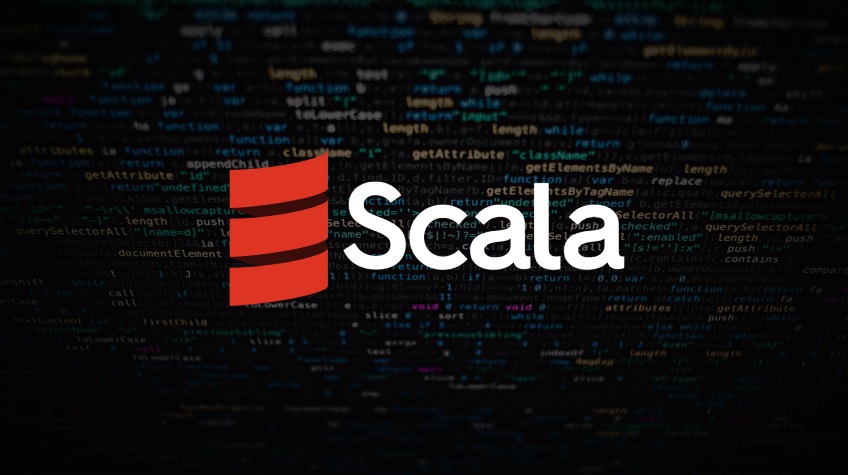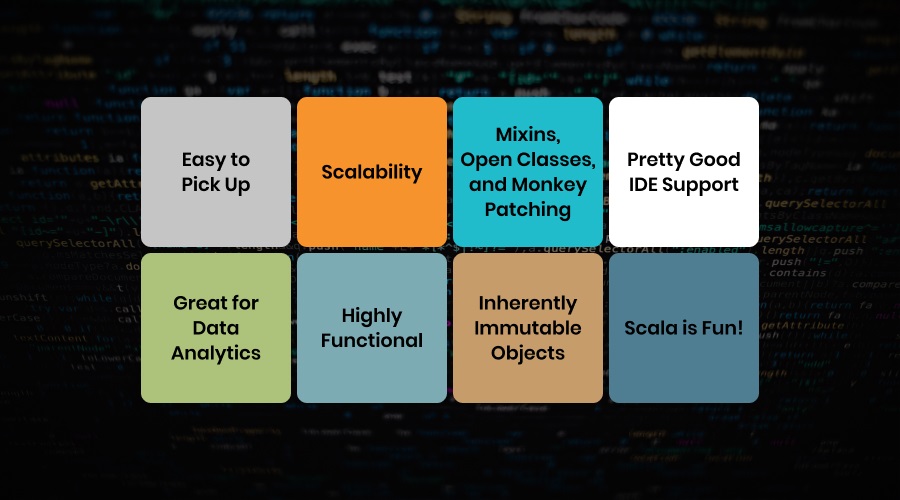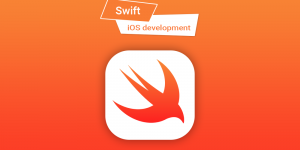
Amongst the programming languages, some stand out for their versatility, efficiency, and ability to be applied to a wide range of use cases. Scala is one such language. Scala stands for “scalable language.” It’s a general-purpose programming language developed to be concise, elegant, and powerful. Combining some of the best object-oriented and functional paradigms into one thing makes Scala a versatile tool for solving many problems.
Since its inception, Scala has gained an enthusiastic group of developers and business houses that recognize that the language scales according to the project’s needs. In 2003, Martin Odersky released it, and since then, Scala has grown to become a highly powerful yet very flexible programming language, especially with regard to applications that need concurrent processing as well as heavy computations involving data.
But have you ever thought about for what purpose Scala is used? In this article, we shall discuss the core use cases of Scala and explain why this particular language has emerged as the most dominant player in the data science, big data processing, and distributed systems domains.
What is Scala Programming Language?
Scala is a statically typed high-level programming language, in that its kind of programming is a mix of object-oriented and functional programming languages. Meaning that types are checked at compile time rather than runtime. Therefore, catching many errors early in the development process improves the reliability of code.
One of the main features of Scala is that its syntax is concise. The language is designed in a way so that many fewer boilerplate codes can be written by developers compared to languages like Java while maintaining the robustness and scalability required for large systems.
However, Scala is extremely expressive, though it is relatively compact. It allows developers to make such complex abstractions, which are less manageable to handle a variety of problems involving programming tasks.
Besides all this, Scala runs on the JVM, which makes it compatible with Java. This is why Java programmers do not need to abandon the Java ecosystem altogether when using it. Scala can call Java libraries, and vice versa. Scala is attractive to businesses that already rely on the Java-based infrastructure.
What is Scala Programming Language Used For?
Scala is used in very diversified fields, from web development, and data science, to systems programming, and the following results show some typical use cases of Scala:
1. Big Data Processing
Scala is probably one of the most used languages for work on big data projects, especially when frameworks like Apache Spark are used. The system that powered Apache Spark has been developed in Scala. So, it is quite normal that a natural fit for data engineers and data scientists working on big-scale distributed systems is Scala, given how easily it works with Spark.
2. Web Development
Scala is used for web application development. The popular Play Framework, the base for many firms developing high-performance web applications, is also written in Scala. One of the advantages of this framework is that it features non-blocking, reactive programming. It is best suited for applications requiring real-time processing needs and scalability.
3. Concurrent and Parallel Programming
This is another area where Scala is strong, thanks to its functional features, concurrency, and parallelism. Scala lets developers build the kind of fault-tolerant distributed systems that are so important in industries like finance, telecoms, or e-commerce, demanding scalability and a high-speed solution.
4. Data Science and Machine Learning:
Scala is becoming increasingly used in the work of data science and machine learning. While it is still the case that Python dominates this space, performance and handling large datasets qualify Scala as the language of choice for machine learning engineers with big data jobs.
5. Financial Applications
Applications of Scala in the Financial Sector Many financial organizations use Scala because it executes concurrent operations safely and efficiently. Scala is often applied to trading platforms as well as in the banking system, where real-time data processing and high-performance calculations are very important.
Advantages of Scala Programming Language

- Brief and Readable Codes: Scala is brief in its syntax; that is, developers can write fewer lines of code as compared to Java or any other verbose language. This consequently means fewer errors in developing codes, makes the resulting code easier to maintain, and speeds up the development cycle.
- Runs on the JVM: Scala is completely interoperable with Java. This means developers can leverage the Java libraries and can even migrate their existing Java codebase incrementally, thereby reducing friction in the adoption of a new language.
- Functional Programming Support: Scala fully supports functional programming. This is true because code becomes easy to reason about and debug. Features such as immutability, higher-order functions, and pattern matching make the code robust and clean.
- Concurrency and Parallelism: Scala’s concurrency model, especially with Akka and its actor model, brings robust tools for writing highly concurrent applications. This is a major benefit in building distributed systems and other sorts of real-time applications.
- Big Data Processing: Scala has deep integration with Apache Spark, making it a fit language for big data processing. Its functional nature completes the distributed computing model of Spark, providing a clean, declarative way to deal with massive datasets.
Disadvantages of Scala Programming Language
- Steep Learning Curve: Scala offers a rich feature set at the cost of being difficult to learn, particularly for those who are new to functional programming or coming from more procedural languages like Java. This is enough to overwhelm newcomers into making it hard to pick up.
- Slower Compile Times: Scala’s advanced features, such as type inference and implicit conversion, delay the compilation of the languages such that some languages can take almost five times more time to compile than the languages without such advanced features.
- Limited tooling support: Scala has matured from its baby age into its growth stage, but it still lags behind Java and Python in terms of tooling and IDE support. This may reduce the facilitation of developers to find the right tools or libraries for their requirements.
- Smaller Community: Compared to its rivals Java or Python, Scala has a much smaller community; this could mean fewer resources, tutorials, and support, but the people are quite dedicated and passionate, so quality does exist—they just aren’t as many around.
Difference Between Scala and Python
1. Performance
Scala
Scala is said to be a language that provides really good performance because it natively compiles to bytecode, similar to Java; hence, it is notably faster than those that get interpreted, like Python. Techniques such as type inference and the paradigms of functional programming can be used to optimize the execution of code.
Python
Python is an interpreted language, hence generally results in slower execution compared to other complied languages. However, it still features dynamic typing and simpler syntax so that it is easier to pick up and rapidly implement code.
2. Type System
Scala
It is a statically typed language, which means that the variables that are typed are declared explicitly. This helps to catch errors early in the development process and improves code maintainability. Scala does support type inference, which can cut down on boilerplate code.
Python
Python is a dynamically typed language; it infers variable types at runtime. This can offer flexibility but leads to unintended behavior if not managed with care.
3. Functional Programming
Scala
Scala is significantly influenced by the principle of functional programming. Therefore, it supports features such as immutability, higher-order functions, and pattern matching. Hence it supports tasks that require complex data transformation and concurrent programming.
Python
Though Python supports some of the concepts of functional programming, it is not as strong on the functional paradigms compared to Scala. Because of its focus on readability and simplicity, Python tends toward more imperative programming styles.
4. Concurrency
Scala
Scala has robust concurrency primitives such as the actors and futures; it is highly suited for creating scalable concurrent applications. Built-in with effective interaction of concurrently running tasks.
Python
In Python, concurrency is implemented by the use of threads and by library-level asyncio for asynchronous programming. However, due to its Global Interpreter Lock, Python’s multi-threaded programs can’t reach true parallelism.
5. Ecosystem and Community
Scala
Scala is relatively expanding in its ecosystem that has libraries and frameworks useful to specific domains such as web development (Play, Akka HTTP), data processing (Spark, Scalding), or more computer science-specific use cases; the field of machine learning is included here in MLLib. Scala might be natively less extensive as a community than Python.
Python
Python is a very wide space containing many libraries and frameworks to get almost everything done on Earth. Hence, it is extremely versatile for a vast number of development projects. The community is huge and dynamic, providing quite a bit of documentation, tutorials, as well as support.
Difference Between Scala and Java
1. Type System
Scala
Scala is a statically typed language, wherein variable types are declared explicitly. This helps trap errors at an earlier stage of the software development cycle and supports the maintainability of code. Scala also supports type inference, which can be used to reduce boilerplate code.
Java
Java is also a statically typed language, but it lacks a type interface. Therefore, the variable type must be declared explicitly, which sometimes becomes much more verbose.
2. Functional Programming
Scala
Scala is also influenced by functional programming concepts. It provides the features to ensure the essence of immutability, and higher-order functions and supports pattern matching. So the best fit can be said for those application domains where sophisticated data transformation and more concurrent programs were being implemented.
Java
It has added features concerning functional programming to the latest versions of Java, that is, lambda expressions and streams, but it does not stick strongly to the functional paradigm as Scala does. It still keeps the characteristic object-oriented impression and imperative style of programming.
3. Conciseness
Scala
The syntax of Scala often looks more concise than Java. It has features like a type interface, pattern matching, and implicit conversions that allow for more powerful and shorter-looking code.
Java
Java is more verbose in general, especially with generic types and collections. While true that Java has been getting less verbose with the latest versions on matters of conciseness, Scala is generally wordier than Java.
4. Interoperability
Scala
Scala supports interoperability with Java. Scala code can invoke Java code, and vice versa, which makes it easy to work with prior Java libraries and frameworks in an application.
Java
Scala interoperability with Java is available, but interoperability may potentially be ever so slightly more constrained in comparison to what’s possible with Java calling Scala code.
5. Performance
Scala
Scalas is compiled to bytecode similar to Java, and so on average it will perform pretty much the same. Functional programming features in Scala and type inference often result in performance optimizations automatically.
Java
Java is known for performance, especially compared to interpreted languages. Its strong JIT compiler and emphasis on efficiency make it well-suited for performance-critical applications.
6. Community and Ecosystem
Scala
Scala has an active community and ecosystem with a large number of libraries and frameworks available in the main domains. Still, I am not sure it is as big as Java’s.
Java
Java is very large in terms of community and ecosystem. Libraries and frameworks support any task imaginable. In many ways, this makes Java a versatile choice for almost any development project. The community for Java is large and active, well-documented with tutorials and support.
Also Read: Data Science vs Machine Learning: You Need to Know
Conclusion
Scala is a powerful programming language that harmoniously integrates both object-oriented and functional programming. Big data processing, applications in concurrent settings, complex distributed systems, and much more have been heavily valued in the context of software development.
Scala has some disadvantages associated with its steeper curve of learning and slower compilation time; however, this seems to be outweighed by its benefits in the proper use scenarios. Whether you’re looking to switch from Java or perhaps find alternative opportunities in data science or big data, one thing you should at least consider for the next project is Scala.






